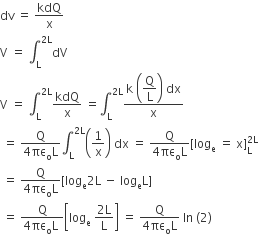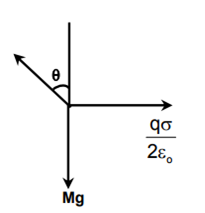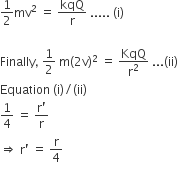Electric Charges And Fields
Sponsor Area
A charge Q is uniformly distributed over a long rod AB of length L as shown in the figure. The electric potential at the point O lying at a distance L from the end A is![]()
D.



Sponsor Area
A charged ball B hangs from a silk thread S which makes an angle θ with a large charged conducting sheet P, as shown in the figure. The surface charge density σ of the sheet is proportional to
-
cos θ
-
cot θ
-
sin θ
-
tan θ
D.
tan θ


A charged particle q is shot towards another charged particle Q which is fixed, with a speed v it approaches Q upto a closest distance r and then returns. If q were given a speed 2v, the closest distances of approach would be
-
r
-
2r
-
r/2
-
r/4
D.
r/4
By principle of conservation of energy
A charged particle with charge q enters a region of constant, uniform and mutually orthogonal fields  , with a velocity
, with a velocity  perpendicular to both
perpendicular to both  , and comes out without any change in magnitude or direction of
, and comes out without any change in magnitude or direction of  .Then
.Then
A.

A long cylindrical shell carries positive surface charge in the upper half and negative surface charge in the lower half. The electric field lines around the cylinder will look like figure given in: (figures are schematic and not drawn to scale)
D.

Field lines should originate from a positive charge and terminate negative charge.
Sponsor Area
Mock Test Series
Mock Test Series














